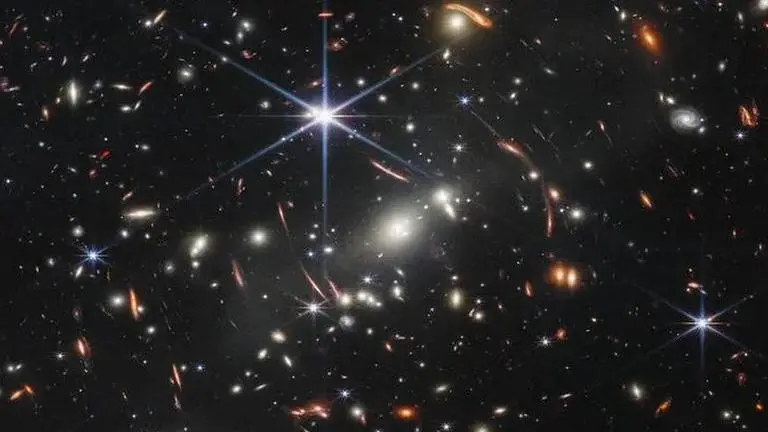Updated 28 April 2023 at 19:19 IST
NASA's balloon captures stunning images of Antennae Galaxies, Tarantula Nebula: See pics
NASA’s super balloon which is a size of a football field has managed to capture stunning images of the distant galaxies that exist in the universe.
- Science News
- 3 min read

NASA’s football field-sized super balloon has managed to capture stunning images of the distant galaxies that exist in the universe. NASA’s Super Pressure Balloon Imaging Telescope (SuprerBIT), which was launched on a scientific super balloon on April 16, captured its first research images of the colossal universe. As per the American space agency’s website, the SuperBIT took its first flight from Wanaka, New Zealand. The balloon managed to capture the image of the Tarantula Nebula and Antennae Galaxies. According to NASA, the pictures were taken by the balloon-borne telescope when it was floating at 108,000 feet above the earth’s surface.
In the blog NASA stated the advantages of sending the balloon instead of a large telescope on a rocket. The space agency called it a cost-efficient move. “The advantage of balloon-based versus space telescopes is the reduced cost of not having to launch a large telescope on a rocket,” NASA wrote on their blog. According to the space agency, the super balloon can circumnavigate the globe for up to 100 days to gather scientific data. Hence, scientists consider it a more suitable option for many astronomical observations.
What is the goal of the mission?
According to NASA, the goal of the mission is to map dark matter around galaxy clusters by measuring the way these massive objects warp the space around them. These massive objects are also known as “weak gravitational lensing”. The space agency stated that these balloons have Hubble space telescope-like capabilities. “The SuperBIT telescope captures images of galaxies in the visible-to-near ultraviolet light spectrum, which is within the Hubble Space Telescope’s capabilities, but with a wider field of view,” NASA wrote.
The Tarantula Nebula taken by the Super Pressure Balloon Imaging Telescope (SuperBIT). Image: NASA
Advertisement
About the galaxies
The super balloon managed to capture images of two galaxies, the Tarantula Nebula and the Antennae galaxies. The Tarantula Nebula is a large star which is 161,000 light-years from Earth. The Nebula has been previously captured by both the Hubble Space Telescope and James Webb Space Telescope. It is surrounded by turbulent clouds of gas and dust that appear to swirl between the region’s bright, newly-formed stars.
The Antennae Galaxies taken by the Super Pressure Balloon Imaging Telescope (SuperBIT). Image: NASA
Advertisement
Meanwhile, the Antennae galaxies catalogued as NGC 4038 and NGC 4039 -- are the two large galaxies colliding into one. It is located 60 million light-years away towards the Corvus constellation. This celestial body has been previously captured by the Hubble Space Telescope, Chandra X-ray Observatory and Spitzer Space Telescope which is now retired. Overall these newly shared images indicate the marvels of the universe that are far from us and remain unknown.
Published By : Bhagyasree Sengupta
Published On: 28 April 2023 at 19:19 IST


